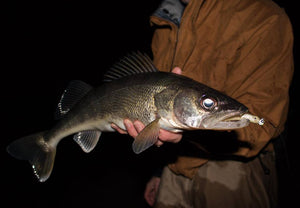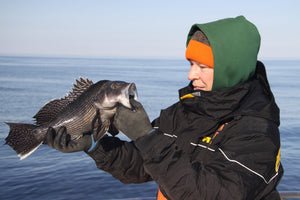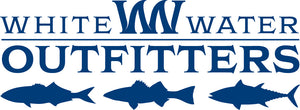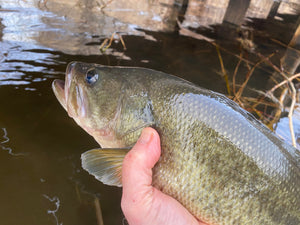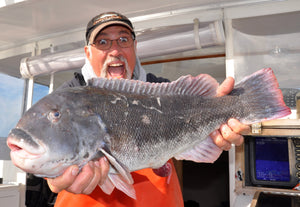Winter Scouting for Spring Results
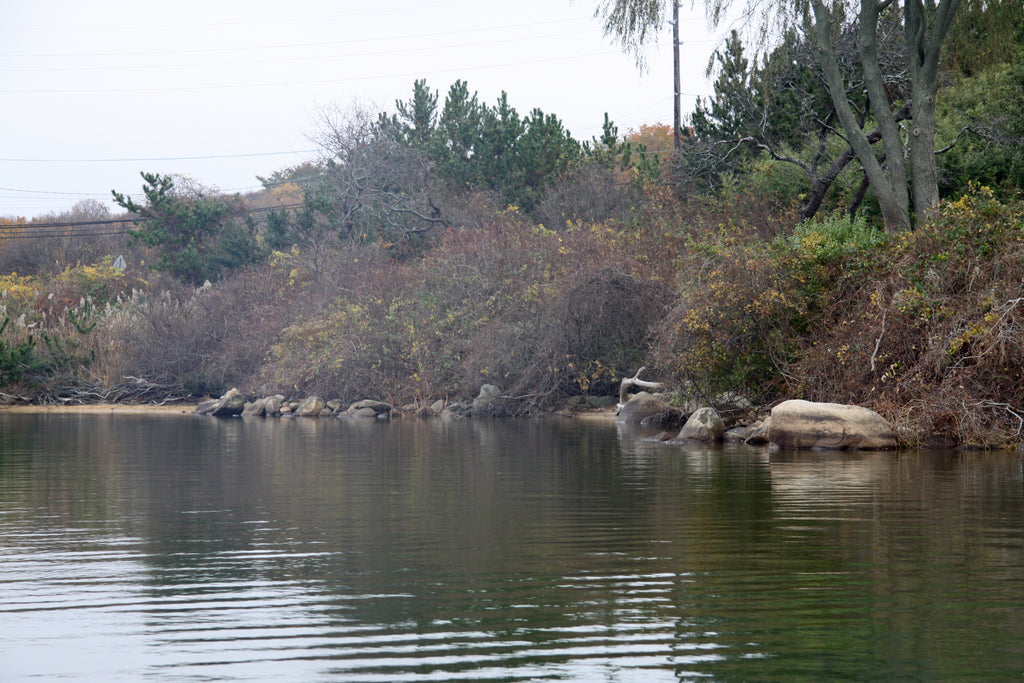
By Tom Schlichter
Hard to imagine, but spring season on the freshwater front is already just around the preverbal corner. Believe it or not, that means its already time to start scouting if you hope to improve your ration of lunker encounters on the sweetwater front in the months ahead. That's right, if you are serious about racking up some impressive spring scores with bass, trout, crappies and slab-sized panfish, now’s the time to squeeze in some serious scouting for at no time will the water be as gin-clear given a few days without rain.
By mid-winter, much of the phytoplankton that robs local waters of their clarity in the late spring and summer months has died off, improving subsurface visibility to the point where on bright, sunny days it may be possible to clearly see bottom in depths exceeding eight feet. That allows for a lot of productive exploring, which you can undertake from a kayak, john boat or even while wading or walking along the shore. Now, in fact, is the perfect time to revisit your favorite hot spots and check to see how they've changed over the winter, attempt to figure out why some spots produce well while other fishy looking areas don't, and make special reconnaissance trips to inspect the bottom and structure configurations on unfamiliar waters you plan to sample in the season ahead.

It’s amazing the secrets you can uncover if you take the time to do some pre-season scouting using your electronics. This spot will obviously be on the author’s hit list for bigmouths this spring. Photo courtesy of Dave Lengyl.
You might be surprised to discover how many things can change on a lake over the course of a few years, or even during a single rough winter. Cruise the perimeter of your favorite bass holes, poking into coves and following the contour of prominent points, and you'll spy new deadfalls, wooden dock posts that have broken free of the shore and settled to the bottom, home-made hockey nets and even discarded Christmas trees.
With the weeds at a low point now, you might also discover some new holes, channel edges and slopes that simply aren't obvious during the heat of summer. Basically, Long Island’s lakes and ponds are naked at this time of the year, fully exposed for you to easily scope-out their fish-holding secrets. All you need to do is to get out and start poking around. Get a topo map (or draw one) showing the waters you explore and note on it the specifics of your findings while marking water depth, contour lines and possible fishing hot spots. Take the time to record exact positions of any structure you find with your electronics or a hand-held global positioning device (GPS), intersecting shore ranges, or even detailed hand-written notes.
As you probe and scout, don't pass up the opportunity to pull tight against overhanging brush where you might reclaim a few lures eaten by the shrubbery last summer while finding hidden pockets of deep water beneath shade that may hold lunkers during August doldrums. Note, too, that at least 10 freshwater locations on Long Island now sport fish passages to the briny. Make note of these as worthy of additional investigation in coming years as returning alewives and river herring, along the young they spawn, can add a lot of protein to the diets of the predatory species in these places which may, ultimately, lead to some very well-fed largemouths and pickerel.

Early season panfish are suckers for a well-placed wet fly. A little reconnaissance now can lead to better catches this spring. Photo by Felicia Scocozza.
For probing in deeper water where you can't see the bottom, run a grid pattern while watching your fish-finder or depth recorder to reveal hidden structure, slopes and humps. Be sure to note where sand or mud bottoms border hard or rock bottoms. It's edges like these that often produce well in early spring and late fall - or even while ice fishing next winter.
Do you enjoy catching spring panfish? If so, one spot you’ll want to keep your eyes out for is the edge that separates a shallow flat from a deeper channel. Follow these edges whenever you find them, looking specifically for spots where sandy bottom juts out into deeper water or extends to the edge of a channel. These are natural travel routes for bluegills, pumpkinseed and other sunfish to travel as they move from deep-water winter hideouts to their shallow spring spawning grounds. Another great panfish setup to watch for is a pocket of three- to five-foot depths close to shore. Oftentimes, the biggest sunnies will pile up here, waiting for the shoreline shallows to heat up enough for a visit to the bank. These pockets can be especially rewarding for shore fishermen and waders to probe in late March and early April. Later, in the summer, they may also hold some bigger bass looking for juvenile bluegill snacks. In either case, approach quietly and cast precisely for these tend to be small honey holes with lunkers that are easily spooked by an aggressive or careless approach.
While exploring new possibilities on the water can be intriguing, there is also a bit of grunt work to be done. Now is the time to check for new posted signs that might reduce your shoreline access if you fish from the bank, make note of parking possibilities and inspect launch sites that may have been updated, removed or even improved.
Winter scouting for spring success is best accomplished on calm days with bright sunshine that penetrates deep into the water, although you can probably glean a good look almost any time the wind lays low. Take your time when poking around and more secrets will reveal themselves than if you rush through the area in an attempt to cover as much ground as possible. Remember that every lake and pond appears different in the winter than it does when encompassed by the lush greens of summer, so be sure to use easily visible shoreline reference points when marking up your notes and maps. Lastly, wear a good pair of polarized sunglasses (product link?) on these reconnaissance trips. They’ll help you see deeper into the water, making it easier to pin-point smaller pieces or notice the sharp points and small crevices in larger structure that tend to hold the lunkers.
- Bryce Poyer


